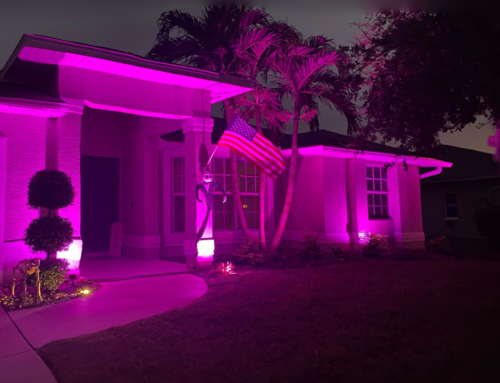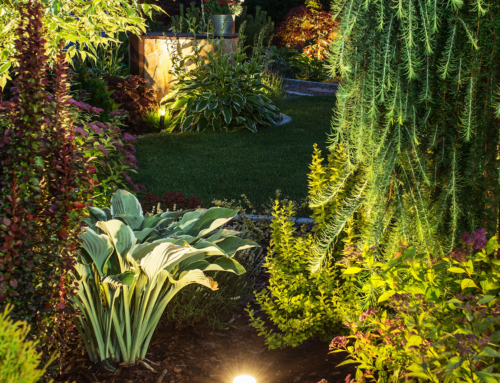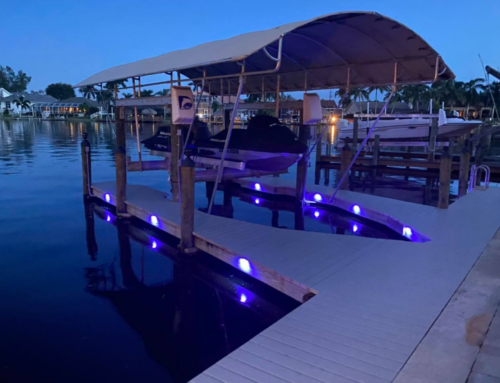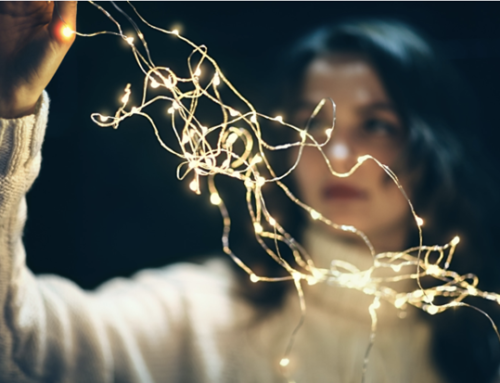Landscape and patio designers love to play around with outdoor lighting to create a specific ambiance or mood or to highlight specific features of the landscape, such as outdoor seating areas, walls, trees, ponds, pathways, statues, or fountains. Nighttime visibility is always a priority with outdoor lighting, but using creative lighting to beautify the landscape and create outdoor living spaces is also important. White lights are still en vogue, but many landscape artists are dabbling with color and zoning to set their clients’ landscape lighting apart.
To really make your outdoor landscape pop, here are a few popular outdoor lighting trends to inspire your own creative vision:
- Create lighting zones
One of the first things an outdoor lighting designer will do when meeting with a new client is to determine how that client wants to use his or her yard and landscape so lighting zones can be created. Zoning allows lights to be programmed into preset groups. That could mean having specific lights that highlight features near the front of the house; another set that washes design elements such as walls or shrubs with light; and others that focus on pathways, lanais, or garden features. The different zones can be turned on or off, depending on how the client wants to utilize their outdoor spaces.
- Add colored lights to your landscape
Traditional white light has never gone out of style, but homeowners who crave something a little different should consider installing smart LED technology to their yards, lanais, and gardens. With a simple-to-use smartphone app, clients can easily brush specific landscape features with multiple color choices depending on their mood, the season, or a specific holiday. Each zone of their yard can be highlighted in a different color, depending on the look they want to achieve, either soft and elegant or bold and sassy. Coastal Outdoor Lighting uses FX Luminaire’s Luxor Controller, which acts as a dimmer but also allows homeowners to create their own color palette by zone. Dimming allows certain features to be muted while other features stand out more brightly. FX Luminaire’s controller offers clients a spectrum of 30,000 color possibilities and the ability to preset up to 250 of those color choices at one time.
- Path lighting
Path lighting can be used to set a mood or to light up a garden path for safety. Fixtures are chosen depending on the landscape design. L-shaped fixtures work well for more modern design aesthetics, while domed fixtures have a more rustic feel. Depending on the look a homeowner wants to achieve, the light can be sharp or more dispersed. Taller light fixtures can light not only the path but the surrounding landscape as well.
- Moon lighting
Landscape designers can mimic the light of the moon by hanging down lights in large trees or from architectural elements on the property. Down lights focus soft light through the tree limbs and leaves or along the wooden beams of a pergola, creating playful shadows on the pathways and landscaping below. The beauty of this type of lighting is that the yard looks moonlit even on moonless evenings. FX Luminaire’s VE down light is a perfect option to create a moonlighting effect as it softly illuminates seating areas, focal points or landscaping features from above.
- Silhouetting
Using uplighting or back lighting techniques, lighting designers can create beautiful silhouettes on walls or specific objects like topiary shrubs, garden fountains or statues. The key to this technique is to place the lights behind the object you want to be silhouetted so that it will cast a dramatic shadow on the landscape behind it.
- Wash lighting
Wash lighting creates visual appeal by highlighting certain design elements of the landscape, such as the base of a tree, shrub, wall, or pillar. Lights are chosen by how much light they give off, how far their beam travels and where the light is aimed. LED lights work well for wash lighting because they can vary from soft to more intense light.
Benefits of LED lights vs. halogen bulbs
LED lights produce less heat than halogen bulbs and are more energy-efficient. It takes quite a bit of electricity to power a halogen bulb and they tend to produce a lot of heat, which can create a fire hazard, depending on where the light is being used. LED lights cost a few more dollars than halogen bulbs up front, but they last much longer. The average LED light can produce up to 60,000 hours of light compared to a halogen bulb, which can last 800 to 1,200 hours, making LEDs more cost-effective. LED lights can be used in directional lighting and come in many colors other than white, making them more versatile than their halogen counterparts.
Coastal Outdoor Lighting’s landscape designers work with homeowners on their outdoor lighting vision. The company uses FX Luminaire and Kichler Lighting products exclusively for outdoor lighting. FX Luminaire offers extensive warranties on all of its outdoor lighting products, including its Luxor controllers. Kichler includes a one-year warranty on all of its outdoor lighting fixtures and covers LED light engine and electrical components for five years from the date of purchase for residential customers. For commercial purchasers, the warranty period is three years from the date of purchase.
To find out more about what Coastal Outdoor Lighting offers and how we can help cultivate your outdoor lighting vision, please contact one of our outdoor illumination designers who have made it their business to turn outdoor spaces into works of art.





